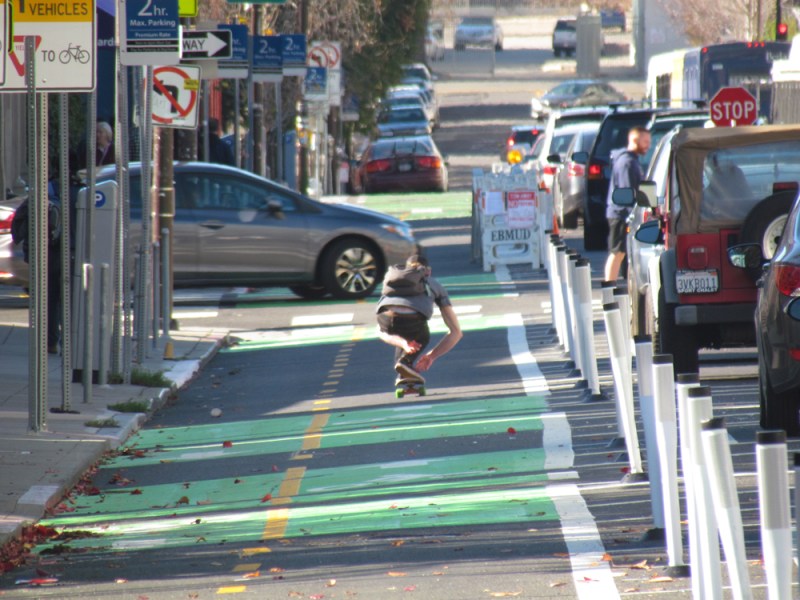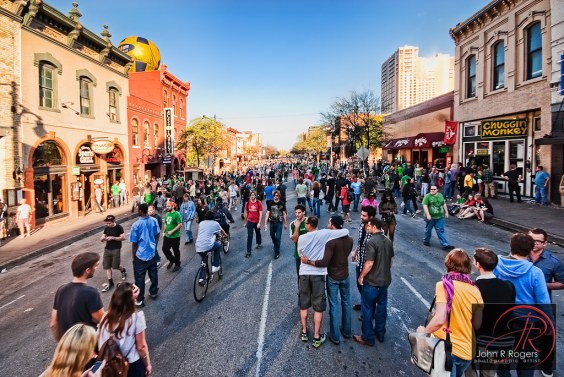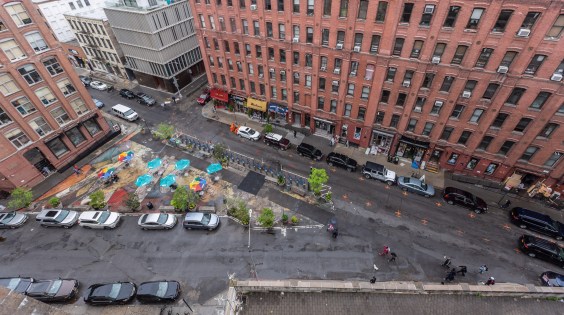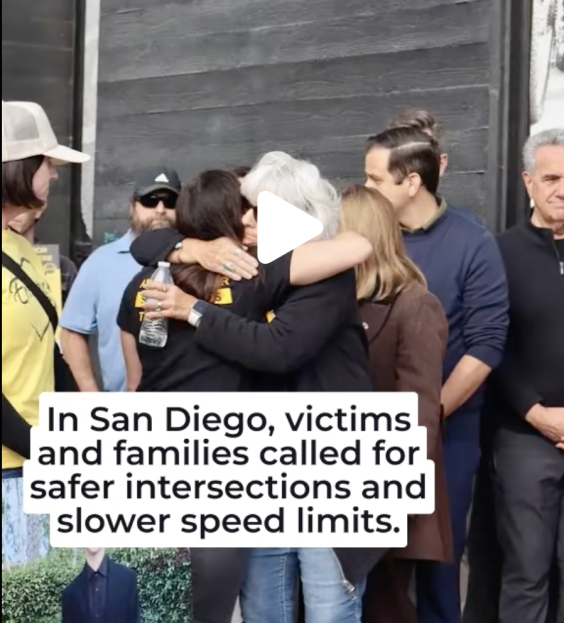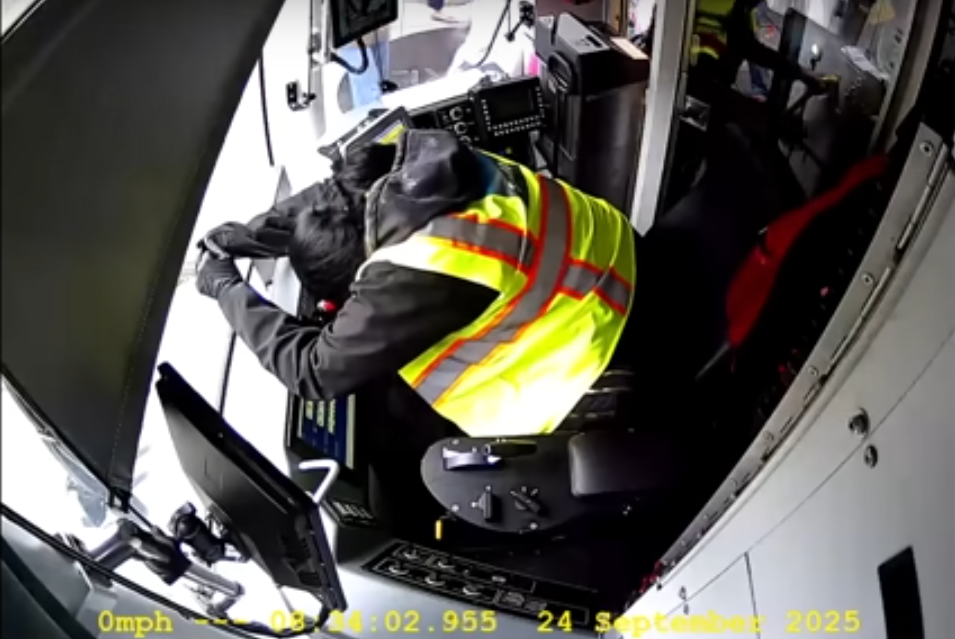Note: GJEL Accident Attorneys regularly sponsors coverage on Streetsblog San Francisco and Streetsblog California. Unless noted in the story, GJEL Accident Attorneys is not consulted for the content or editorial direction of the sponsored content.
Included in People for Bike's list of “Best New Bikeways of 2017” is one in California: new protected bike lanes along Bancroft Way in Berkeley. These are far from the only new bikeways built in California during the past year that are worthy of celebration, but the lanes in Berkeley are something special.
For one thing, they are two-way, parking-protected lanes along a one-way street leading uphill to the UC Berkeley campus, with bike boxes to guide left and right turns and soft-hit posts between the parked cars and the lane. They are also the first “connected protected” bikeway in Berkeley, because they connect to another protected bikeway that runs perpendicularly along Fulton Street. They provide bike riders a new a safe option to get to campus within the severely limited grid of one-way streets south of Bancroft.
But the project is also special because it was planned and funded in large part by AC Transit, the regional bus agency that operates several busy bus lines on Bancroft. AC Transit wanted to extend bus-only lanes that run for a few blocks down Bancroft, and working with Bike East Bay they found a solution that could work for all: a red-painted bus-only lane down one side, and the two-way parking-protected bikeway on the other.
A representative for AC Transit told the Berkeley City Council, “We are including green protected bike lanes in this project because we need the political support of the bike coalition to get this approved.”
“AC transit came up with designs and got the funding together,” said Dave Campbell, Advocacy Director for Bike East Bay. “It's their project. How many bus agencies nationally have stepped up to design and build bikeways?”
On top of all that, the street was also narrowed, which makes crossing much easier for pedestrians. This section formerly had a slightly confusing configuration of two to three lanes, all going in one direction, which tended to encourage drivers to speed around each other on the downhill. Now cars have two lanes to drive in, buses have their own lane, and bikes have a two-way bikeway protected by a row of parking.
The street is not perfect. Yet. People still park in the bus lane. Bicyclists riding downhill have to navigate over to the left side of the street to enter the lanes, although there are clear markings to help them figure out where to go. Left turns were eliminated for cars from Bancroft onto Fulton, but it is taking a while for that new pattern to sink in. Car drivers are used to being able to make a series of left turns that sweep them back up towards campus in a search for nonexistent street parking.
But one of the best things about the project is that it is a work in progress. Future phases—some of which have been approved already by the Berkeley City Council, and all of which have funding lined up—include a two-way bikeway on Dana, which tees into Bancroft, and improvements along four blocks of Telegraph Avenue as it approaches the campus. AC Transit got funding for many of those improvements to help its buses move more efficiently along there, but the streets will be better for everyone. Those improvements are planned for 2018.
Future plans include extending the two-way bikeway all the way up Bancroft to the top of campus at Piedmont Way.
Meanwhile there is still work to do on the current project. A turn box for bikes needs better signage, and the city may have to consider moving the “no left turn” sign into the intersection, because so many cars seem not to see it. A curb still needs to be painted red to make it clear that cars are not supposed to be parking where it looks like a metered spot, even though it is right on top of the green-painted bike lane.
The city plans to collect data and issue a report about the project once it is complete and people have been using it for a while. Bike East Bay is doing its own evaluation to augment the city's data, including a survey on how riders like the lanes and what needs improvement.
Campbell says he has heard from some bike riders that they prefer to ride downhill in the travel lane or even the bus lane on the right-hand side of the street. His response: Not an issue. “Those people are not the design users,” he said. “We didn't put in the bikeway for confident cyclists, but for a much wider range of bicyclists who want to feel safe on the road.”
Bike East Bays' vision for the area is a connected network of low-stress bikeways that say: “Hey, bicyclists! You are welcome here, and safe.”
